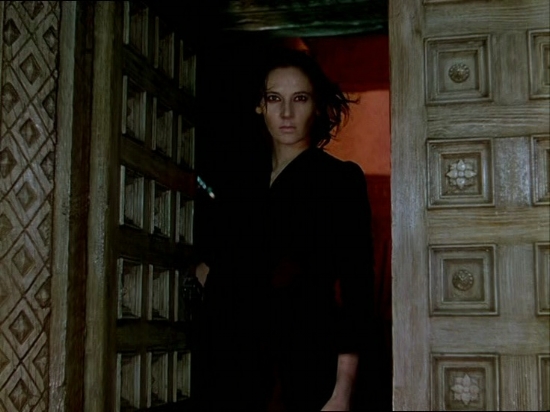Living Life in the Wrong Order: Jack Cardiff and the Integrated Narrative
‘In my mind this light is the light in which cinema was invented.’
Martin Scorsese, on Jack Cardiff
I recently watched a documentary (‘Cameraman,’ 2010) and a play (Terry Johnson’s ‘Prism’) about the legendary cinematographer, Jack Cardiff (1914-2009).
Cardiff began his life in film as a clapper boy in the silent era. He went on to become a master of the Technicolor age. He shot the likes of Dietrich, Niven, Bogart, Hepburn, Gardner, Monroe and Loren. In the latter part of his career he was an accomplished director, and in his seventies he applied his expertise to the world of digital.
‘For his inventions, imagination and sheer audacity, there has never been another colour cameraman like Jack Cardiff.’
Michael Powell
Cardiff’s greatest work was with the film-making duo Michael Powell and Emeric Pressburger. Together they created the icons of British cinema, ‘A Matter of Life and Death,’ ‘Black Narcissus’ and ‘The Red Shoes.’ These are films of bold ambition, rich invention and touching romance.
Cardiff was an avid student of Rembrandt, Vermeer and Turner, and he regarded the cameraman as ‘the man who paints the movie.’ He gave us lush green forests, blood-orange sunsets and ominous dark shadows; he produced iridescent purples, vibrant pinks and luminous turquoises; he conjured up disarming flashes of passionate crimson lips, intimate close-ups on smouldering brown eyes.
‘He gave me half of my performance with the lighting.’
Kathleen Byron, Actor, Black Narcissus
I was quite taken with one particular observation Cardiff made in his autobiography, ‘Magic Hour.’ Looking back on his career, he reflected on the disordered structure of most of our lives.
‘It would be far more conducive growing old gracefully if our lives were lived in a rewarding and heartening sequence. Submit your life to any decent script editor and they’d reject it on structure alone.’
This theme is taken up in Johnson’s excellent play.
‘A real life does not boast a satisfying story arc. We are doomed to live the events of our lives in the wrong damn order; it’s like shooting a film, not watching one…The time of our lives is not the finished masterpiece; it’s just whatever we got in the can today.’
It’s true that our lives are often messy, complex and chaotic. We behave erratically and inconsistently. We are overtaken by events, by relationships, and circumstances beyond our control. We tend to live our lives in the wrong order.
I understand that in the world of psychotherapy patients are encouraged to create an ‘integrated narrative’: a single story that accommodates diverse experiences and relationships; that makes sense of the past and present, both logically and intuitively; that gives some direction for the future; that is recognisable as one’s own. An integrated narrative provides a certain amount of meaning, identity and purpose to one’s life.
I suspect that brands and businesses could do with integrated narratives too. So often a brand acquires associations and characteristics that are somewhat contradictory and at odds. So often a business is led by groups of people with very different points of view. So often decisions are made and affairs are played out in the wrong order. In such circumstances all would benefit from a coherent story that accommodates these multiple events and perspectives; that binds the disparate threads together into one fabric.
I’m well aware that many are sceptical of talk of storytelling. It sometimes seems too easy, flip and commonplace. But I have found that narrative continues to be a valuable tool in life and business. Stories are universal and timeless precisely because they make sense when we are confused; they unite us when we are divided; they provide direction when we are lost.
In Johnson’s play Cardiff quotes the director John Huston with whom he shot the Bogart-Hepburn classic ‘The African Queen’:
‘We’ve all got a strip of celluloid running though us. It’s got a thousand images on it and it’s a fragile thing. But if you are an artist you are going to cut and colour and grade and project that celluloid back at the world, because our past is all we’ve got to give.’
No. 156

